Religious Studies > QUESTIONS & ANSWERS > Chamberlain College Of Nursing > RELIGION > RELI 448N Week 8 Final Exam (GRADED A) (All)
Chamberlain College Of Nursing > RELIGION > RELI 448N Week 8 Final Exam (GRADED A)
Document Content and Description Below
RELI 448N Week 8 Final Exam Grading Summary Question Type: # Of Questions: # Correct: Multiple Choice 25 25 Essay 4 N/A Grade Details - All Questions 4. Question : (TCO 4) Who was the S... cottish anthropologist & author of The Golden Bough who saw the origins of religion in early attempts by human beings to influence nature & who identified religion as an intermediate stage between magic & science? Student Answer: James Frazer Rudolf Otto William James Wilhelm Schmidt 5. Question : (TCO 4) What is the name of the Austrian ethnographer and philologist who argued that all humankind once believed in a single High God & that to this simple monotheism later beliefs in lesser gods & spirits were added? Student Answer: James Frazer William James Wilhelm Schmidt Carl Gustav Jung 6. Question : (TCO 8) Vedic religion was: Student Answer: patriarchal & polytheistic. matriarchal & polytheistic. monotheistic. monistic. 7. Question : (TCO 8) The power of a god is often symbolized by: Student Answer: lightening bolts. rings of fire. animals. many arms. 8. Question : (TCO 9) Hinduism, as formulated in the Upanishads, Student Answer: encourages meditation to underst& the essence of reality. says we must honor our social obligations & roles. rejected the authority of the Vedas in formulating new religious insights. advocates devotion to any of the many gods. 9. Question : (TCO 10) Both Jainism & Sikhism: Student Answer: practice vegetarianism. advocate ahimsa. are monotheistic. view the human being as composite of spirit & matter. 10. Question : (TCO 8) According to the Buddha, his teachings must be: Student Answer: accepted on faith. experienced by oneself. memorized & chanted. spread by missionaries. 11. Question : (TCO 8) Once a person reaches nirvana: Student Answer: suffering continues only for this life. samsara is attained. rebirth is finished. the Pure L& is entered. 12. Question : (TCO 8 ) The Chinese word for "righteousness," "benevolence," "humanity-at-its-best" is: Student Answer: Ren (jen). Li. Wen. Hsiao (xiao). 13. Question : (TCO 8) Confucius thought the most important relationship was: Student Answer: ruler-subject. husband-wife. father-son. friend-friend. 14. Question : (TCO 9) Which is not a Daoist value? Student Answer: Simplicity Spontaneity Sensing movements of nature Formal education 15. Question : (TCO 9) In Zhuangzi's (Chuang Tzu's) famous dream, he was not certain that he was not: Student Answer: Confucius. an ox. a butterfly. a Daoist. 16. Question : (TCO 5) All of the following ancient world religions are minor religions except: Student Answer: Shinto. Buddhism. Taoism. Jainism. 17. Question : (TCO 11) Sikhism is charaterized by: Student Answer: special clothing & religious militarism. special clothing but not religious militarism. religious militarism but not special clothing. special clothing only. 18. Question : (TCO 6) A contract between the Hebrews & their God was called a: Student Answer: mitzvah. covenant. yarmulke. commandment. 19. Question : (TCO 6) The sacred core of the Hebrew Bible is called the: Student Answer: Torah. Talmud. Writings. Prophets. 20. Question : (TCO 6) A joyful spring festival that recalls the Hebrews' exodus from Egypt & freedom from oppression is: Student Answer: Yom Kippur. Passover (Seder). Purim. Hanukkah. 21. Question : (TCO 7) Jesus sometimes summed up his teachings in: Student Answer: ten commandments. one commandment. two commandments. five commandments. 22. Question : (TCO 7) The most Jewish of the Gospels is: Student Answer: Matthew. Mark. Luke. John. 23. Question : (TCO 6) Muhammad's job before he became a prophet was as a: Student Answer: merchant. date grower. caravan driver. camel breeder. * Times are displayed in (GMT-07:00) Mountain Time (US & Canada) Grading Summary Date Taken: Pts Received: Number of Attempts: 228 / 300 0 (76%) Question Type: # Of Questions: # Correct: Multiple Choice 25 22 Essay 4 N/A Grade Details - All Questions Page: 1 2 1. Question : (TCO 4) Compare & contrast Sigmund Freud's theory about the origin of religions with William James's theory. How does each of these psychologists view religion (positively or negatively)? Now analyze how the insights of Freud or James might illuminate your religious tradition or the tradition with which you are the most familiar. How would Freud or James underst& that tradition? Use specific examples to support your answer (e.g., a specific belief or ritual). Student Answer: 2. Question : (TCO 9) Identify & analyze the Four Noble Truths, in particular, the Noble Eightfold Path. What ideas from Hinduism did Buddhism essentially keep? Describe them. Include enough details to support your answer. Student Answer: 3. Question : (TCO 3) Explain & evaluate Thomas Aquinas' Cosmological Argument for the existence of God: The first & plainest is the method that proceeds from the point of view of motion. It is certain & in accord with experience, that things on earth undergo change. Now, everything that is moved is moved by something; nothing, indeed, is changed, except it is changed to something which it is in potentiality. Moreover, anything moves in accordance with something actually existing; change itself, is nothing else than to bring forth something from potentiality into actuality. Now, nothing can be brought from potentiality to actual existence except through something actually existing: thus heat in action, as fire, makes fire-wood, which is hot in potentiality, to be hot actually, & through this process, changes itself. The same thing cannot at the same time be actually & potentially the same thing, but only in regard to different things. What is actually hot cannot be at the same time potentially hot, but it is possible for it at the same time to be potentially cold. It is impossible, then, that anything should be both mover & the thing moved, in regard to the same thing & in the same way, or that it should move itself. Everything, therefore, is moved by something else. If, then, that by which it is moved, is also moved, this must be moved by something still different, & this, again, by something else. But this process cannot go on to infinity because there would not be any first mover, nor, because of this fact, anything else in motion, as the succeeding things would not move except because of what is moved by the first mover, just as a stick is not moved except through what is moved from the hand. Therefore it is necessary to go back to some first mover, which is itself moved by nothing--& this all men know as God. Briefly explain & then evaluate this proof for the existence of God. Student Answer: 4. Question : (TCO 11) Identify & analyze three basic patterns in indigeneous religions. Use examples from traditional Hawaiian religion to support your answer. Student Answer: * Times are displayed in (GMT-07:00) Mountain Time (US & Canada) [Show More]
Last updated: 1 year ago
Preview 1 out of 10 pages
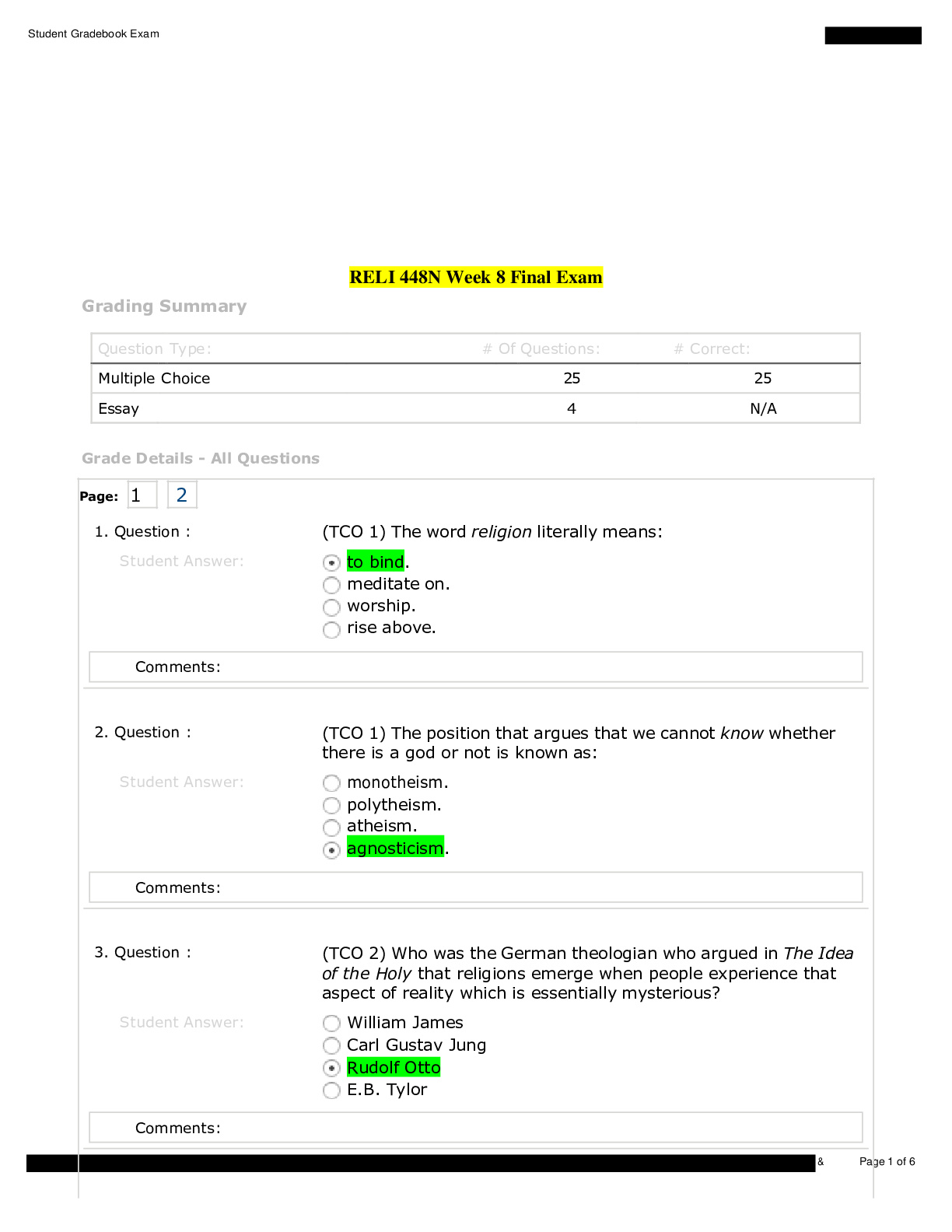
Reviews( 0 )
Document information
Connected school, study & course
About the document
Uploaded On
Apr 26, 2020
Number of pages
10
Written in
Additional information
This document has been written for:
Uploaded
Apr 26, 2020
Downloads
0
Views
61








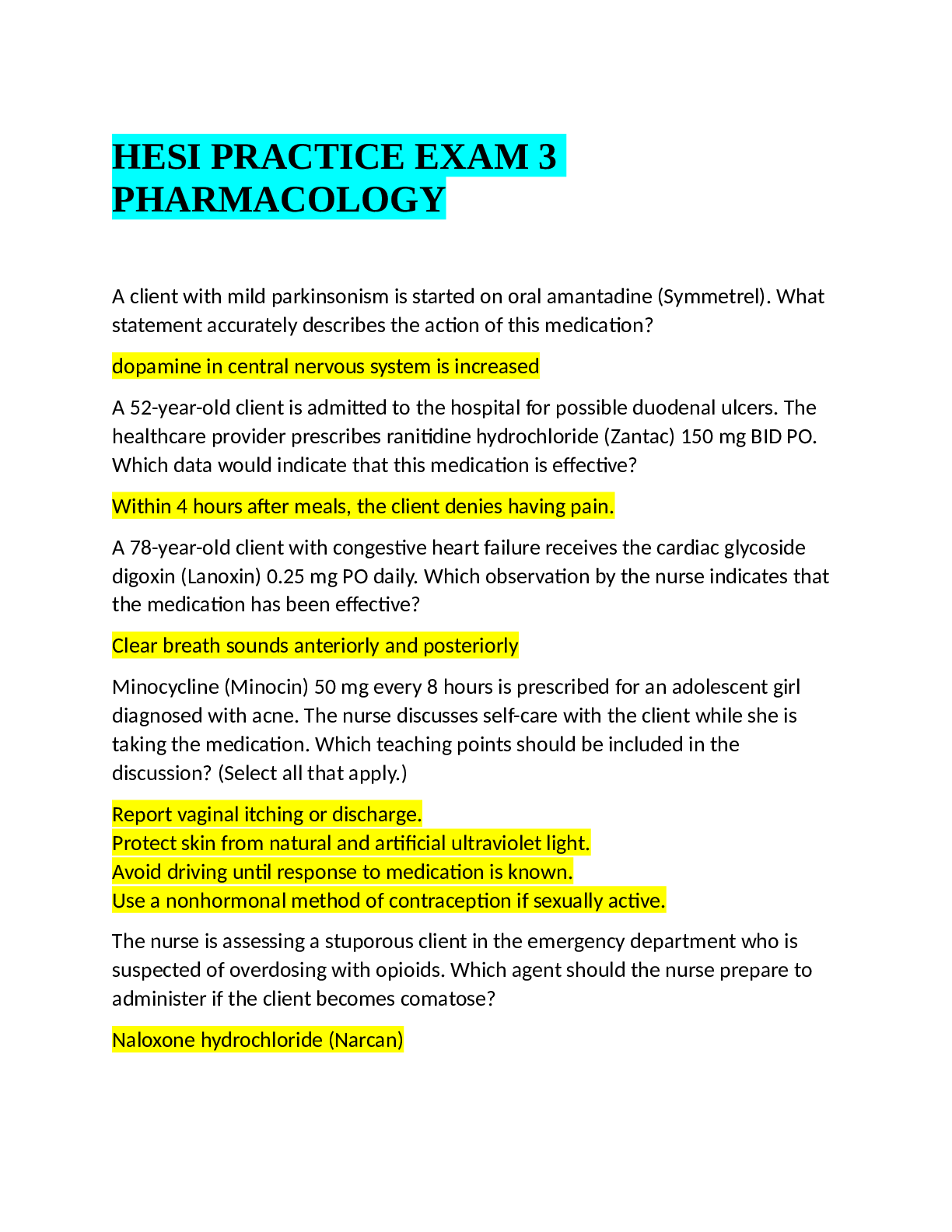




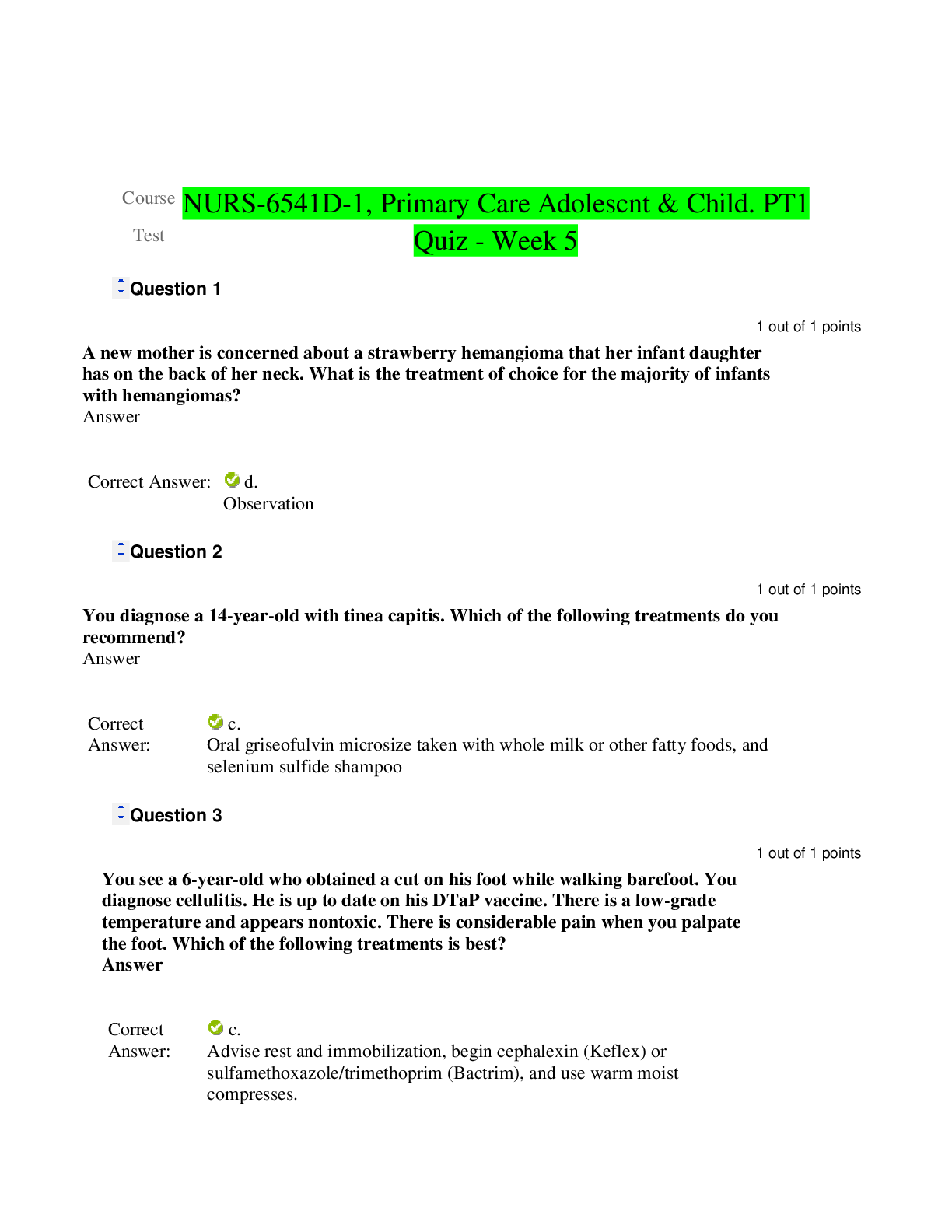
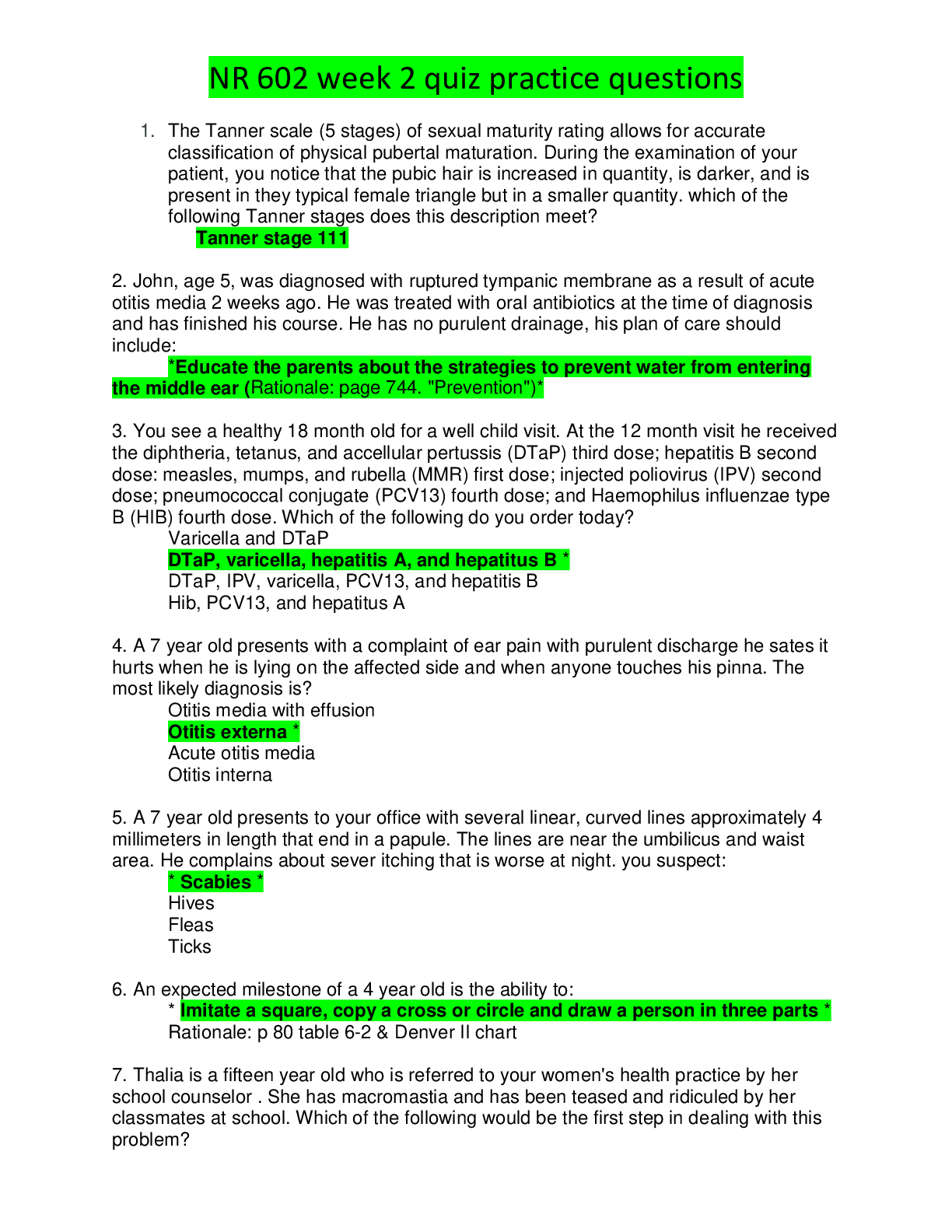
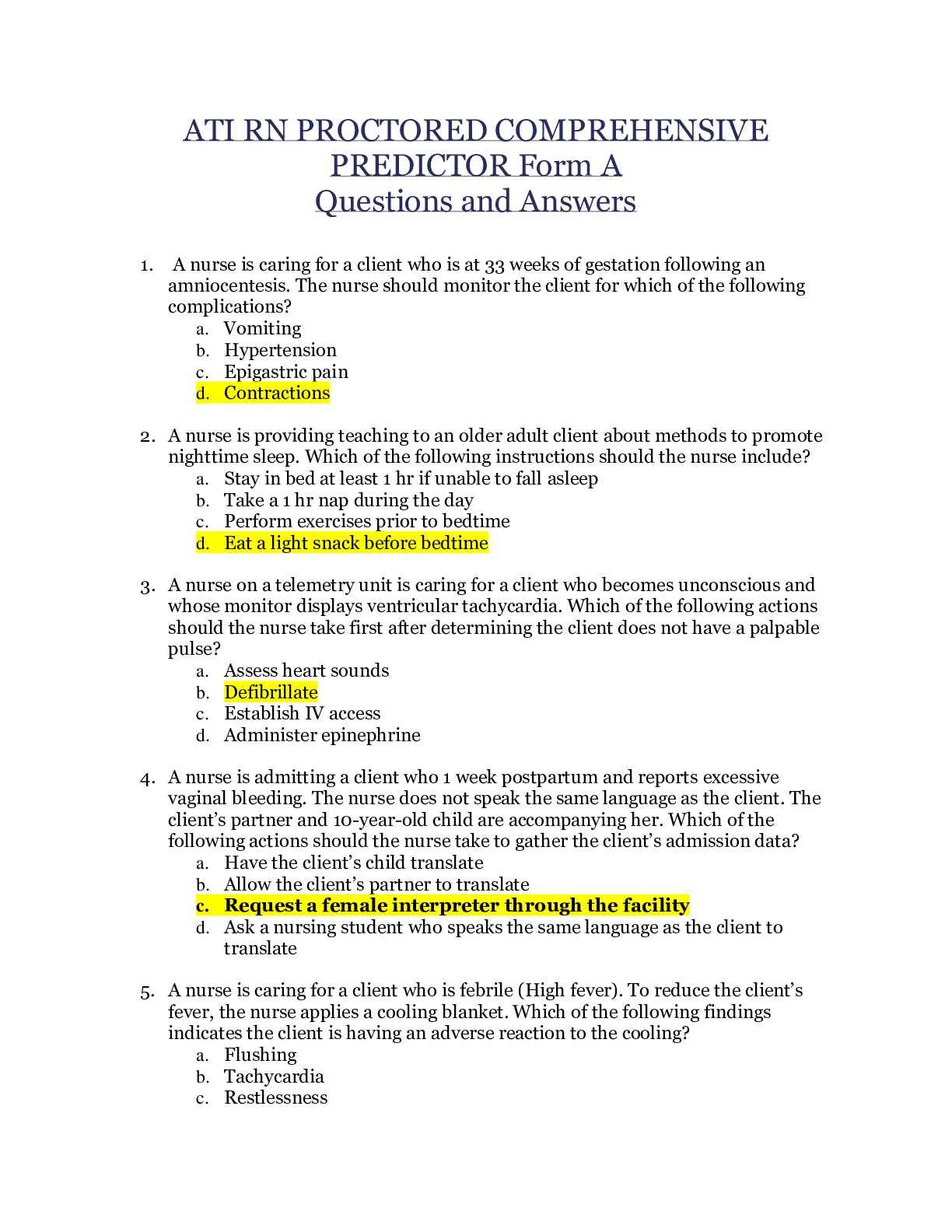
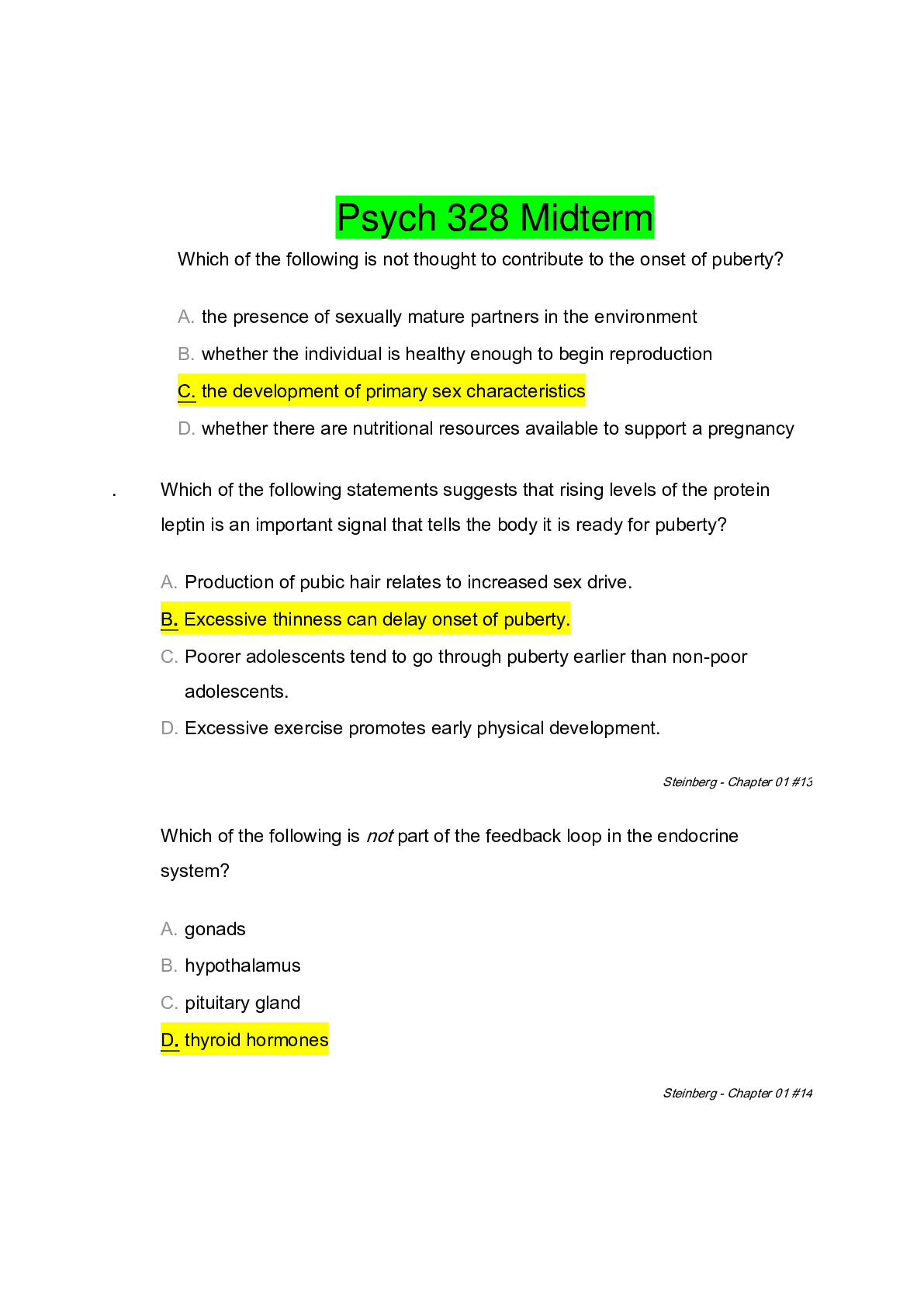
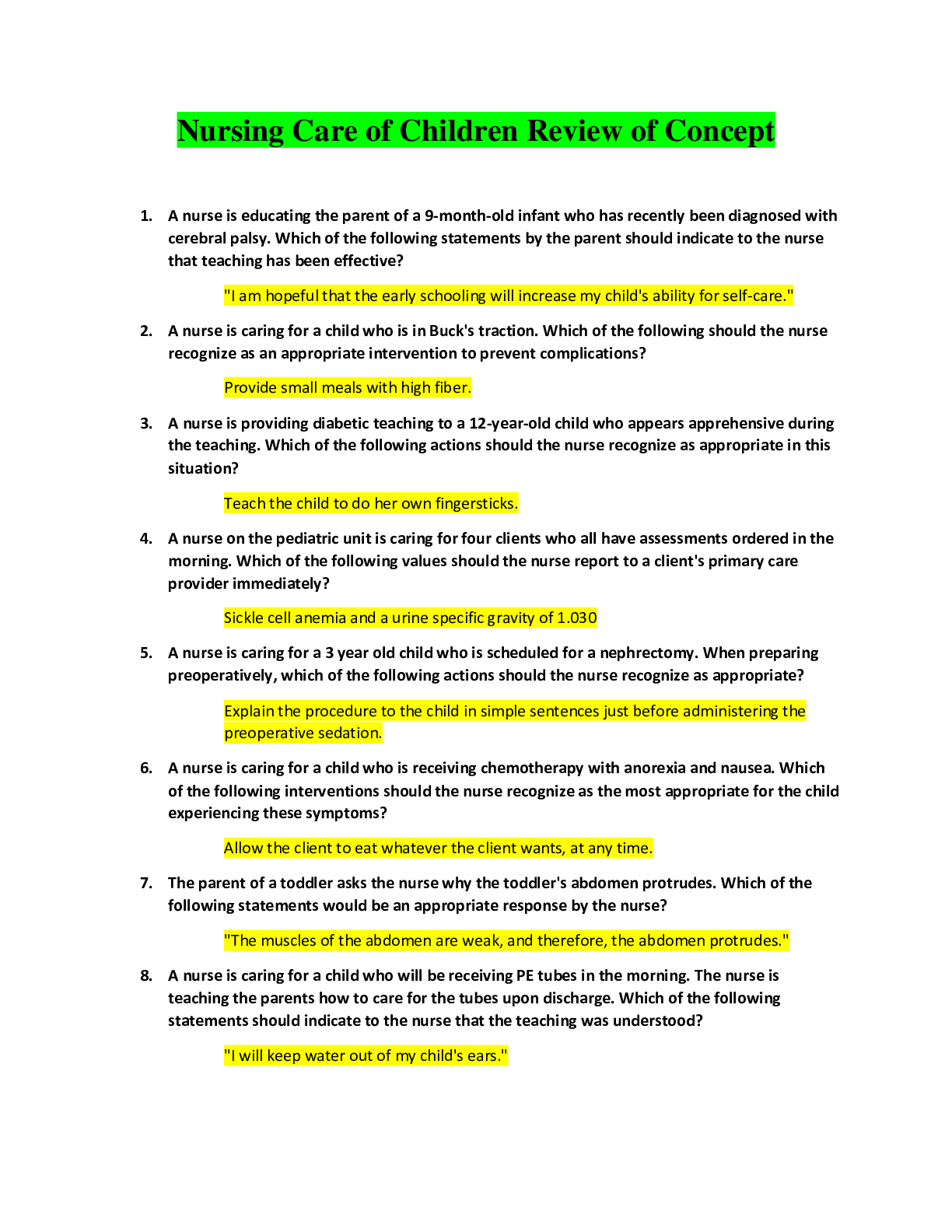
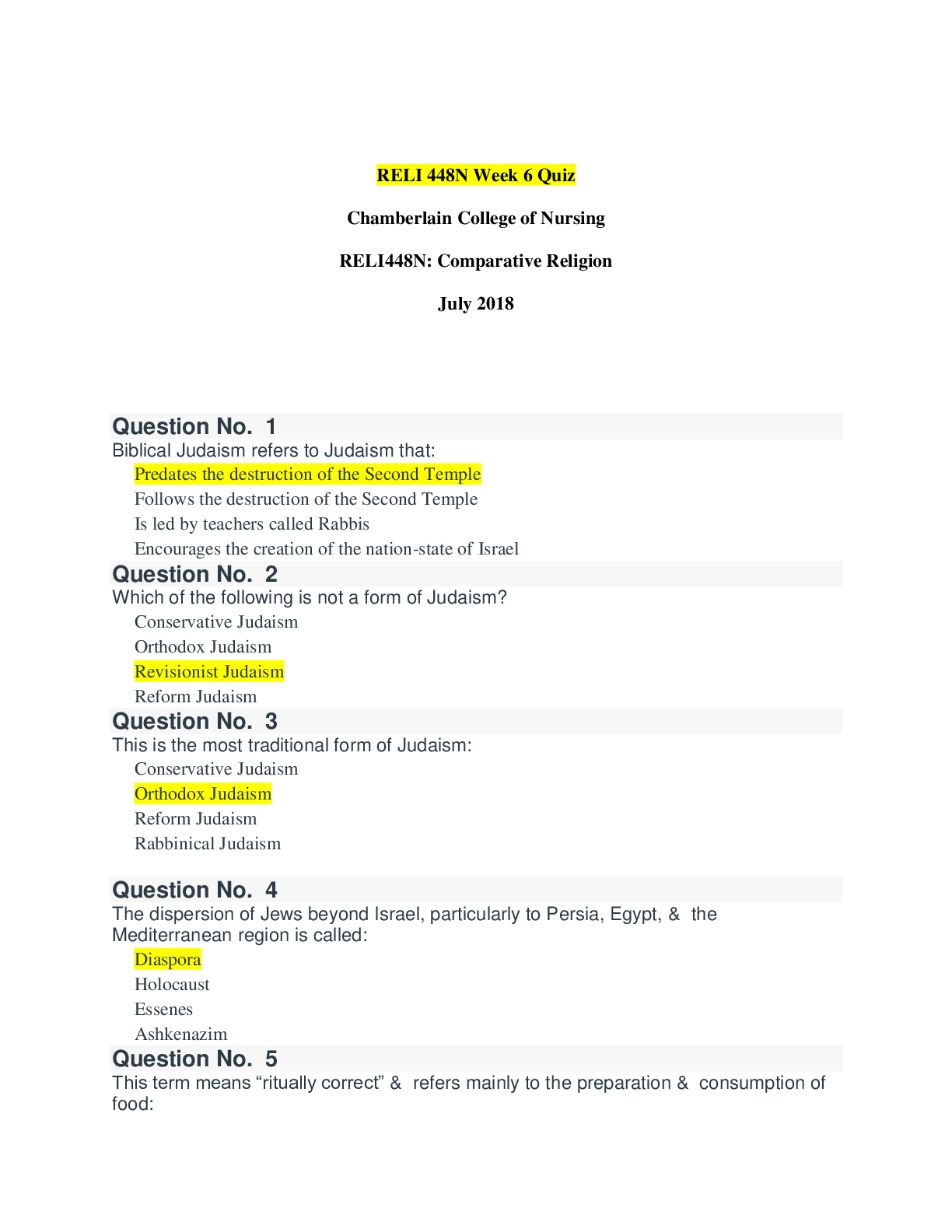
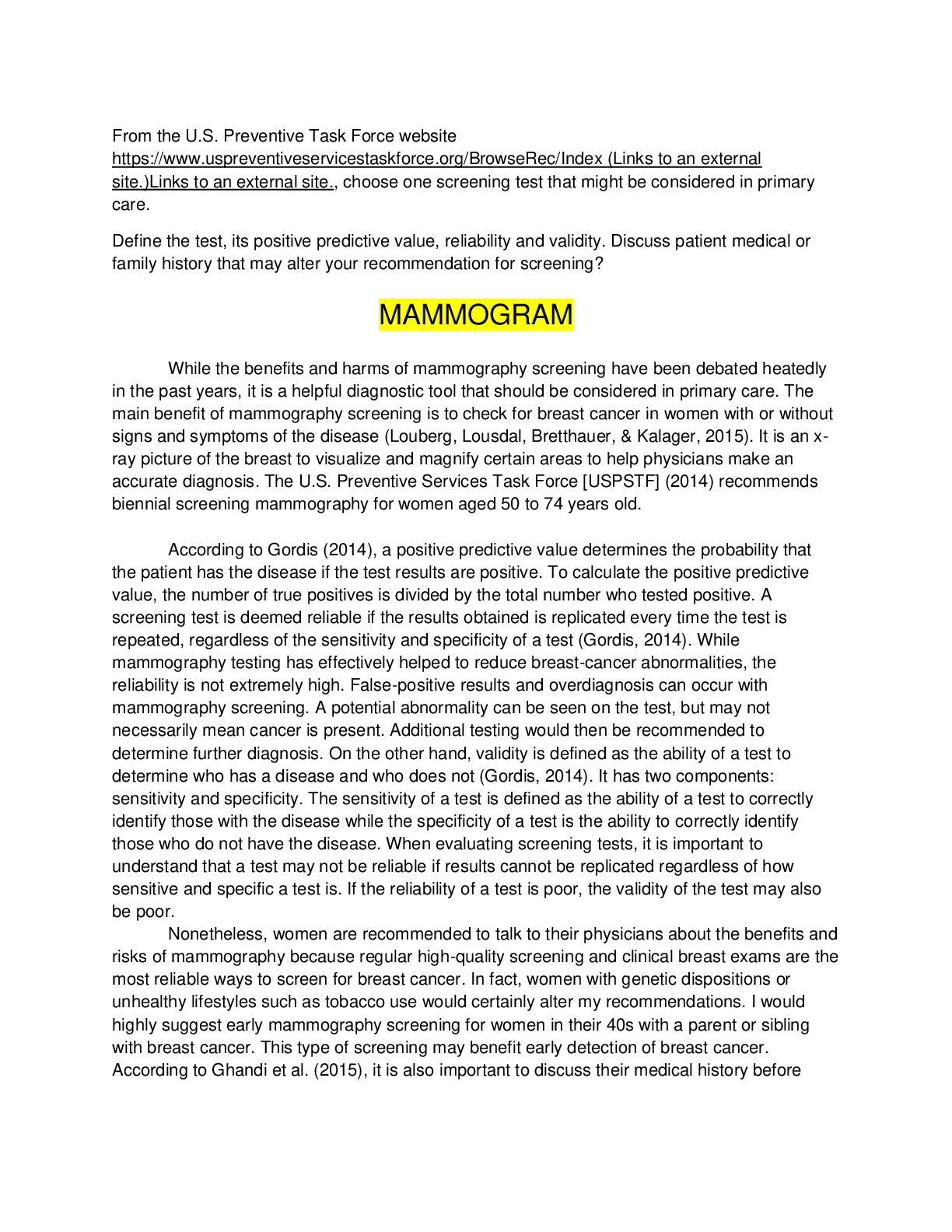
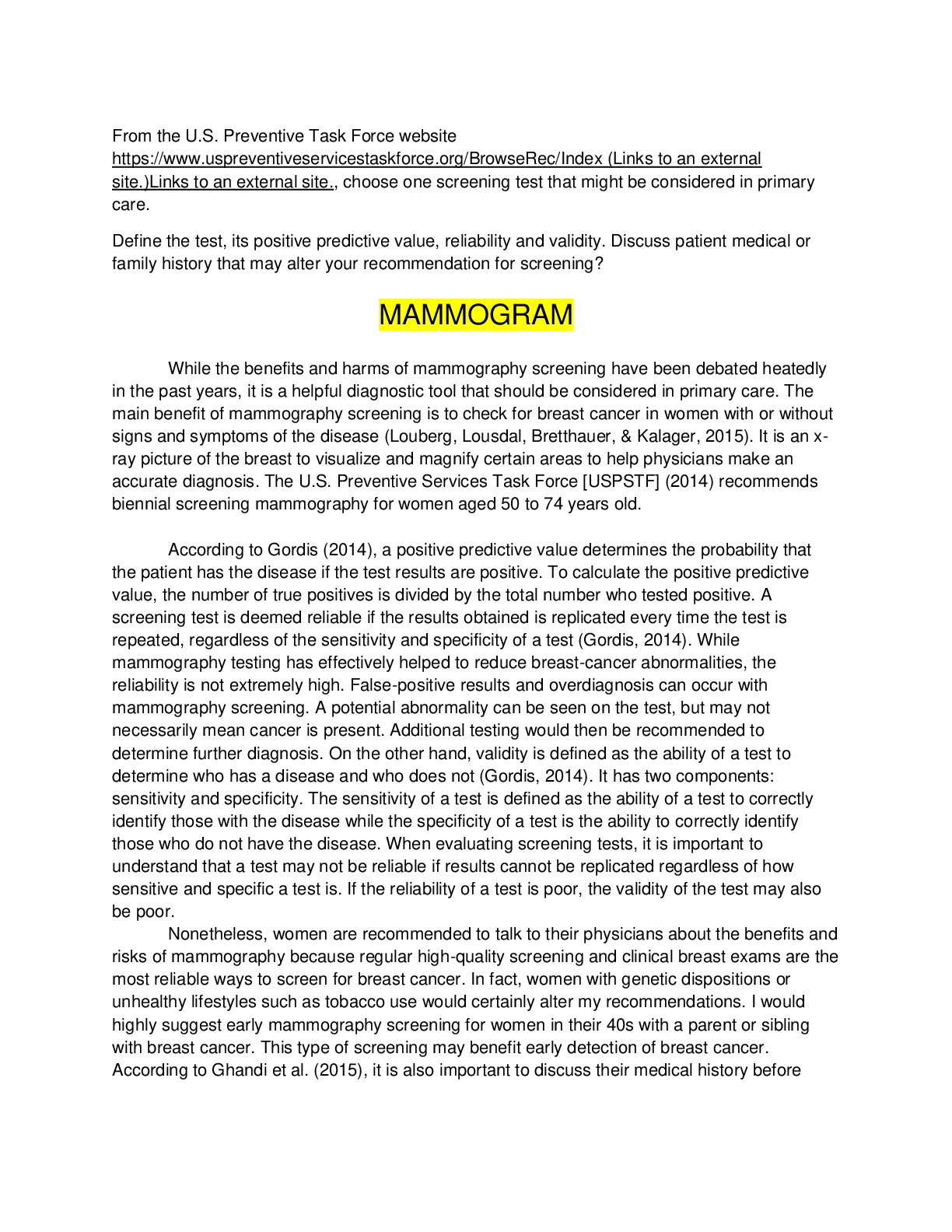
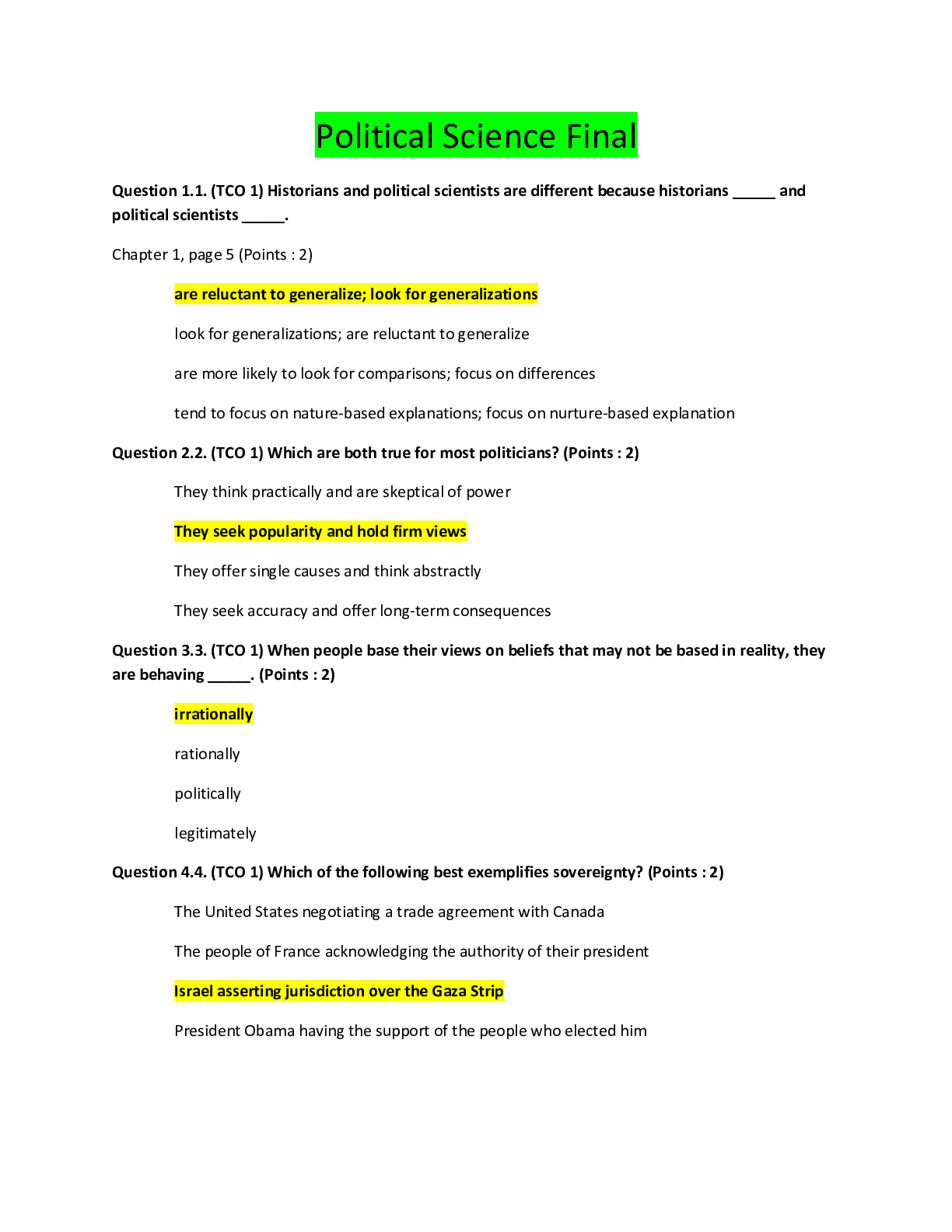
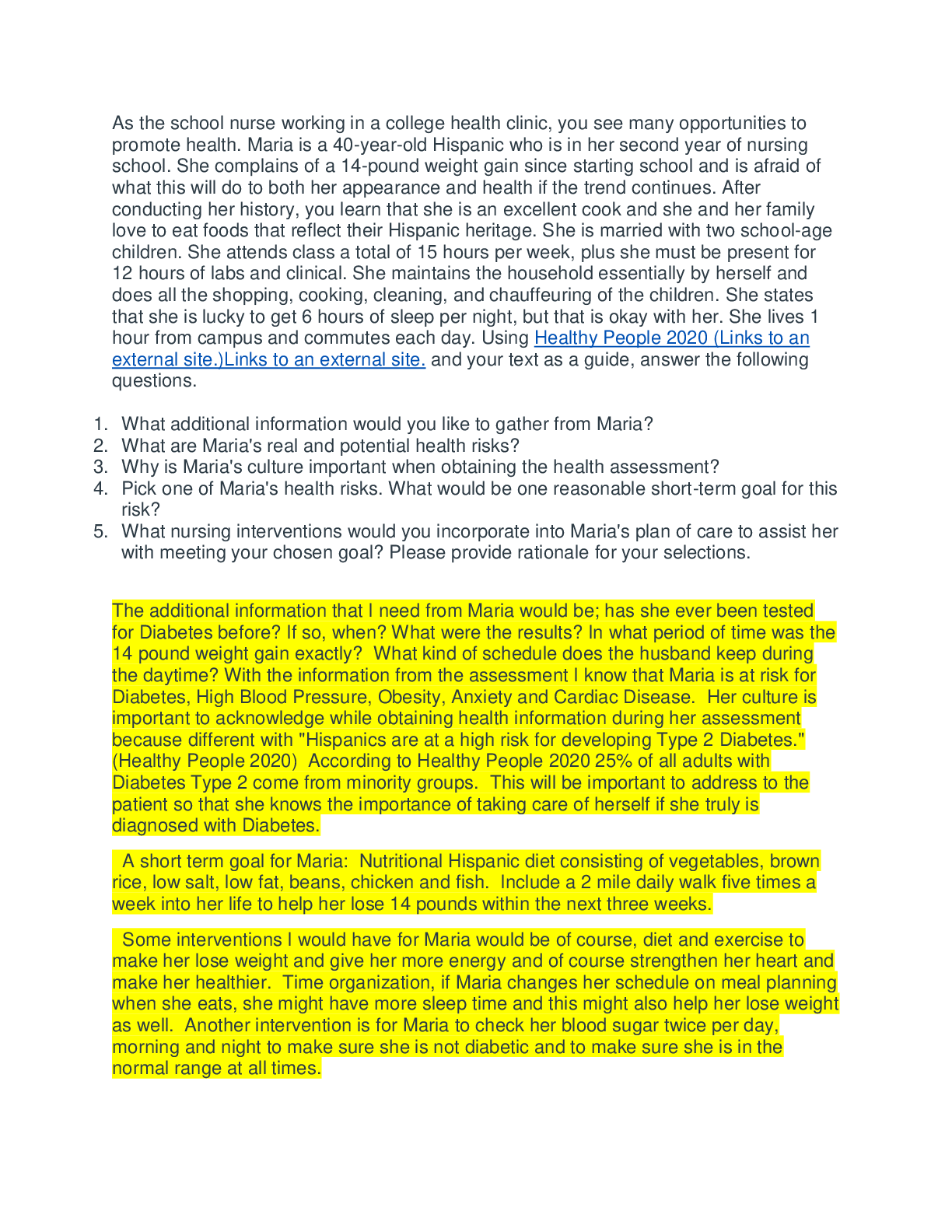
.png)
.png)
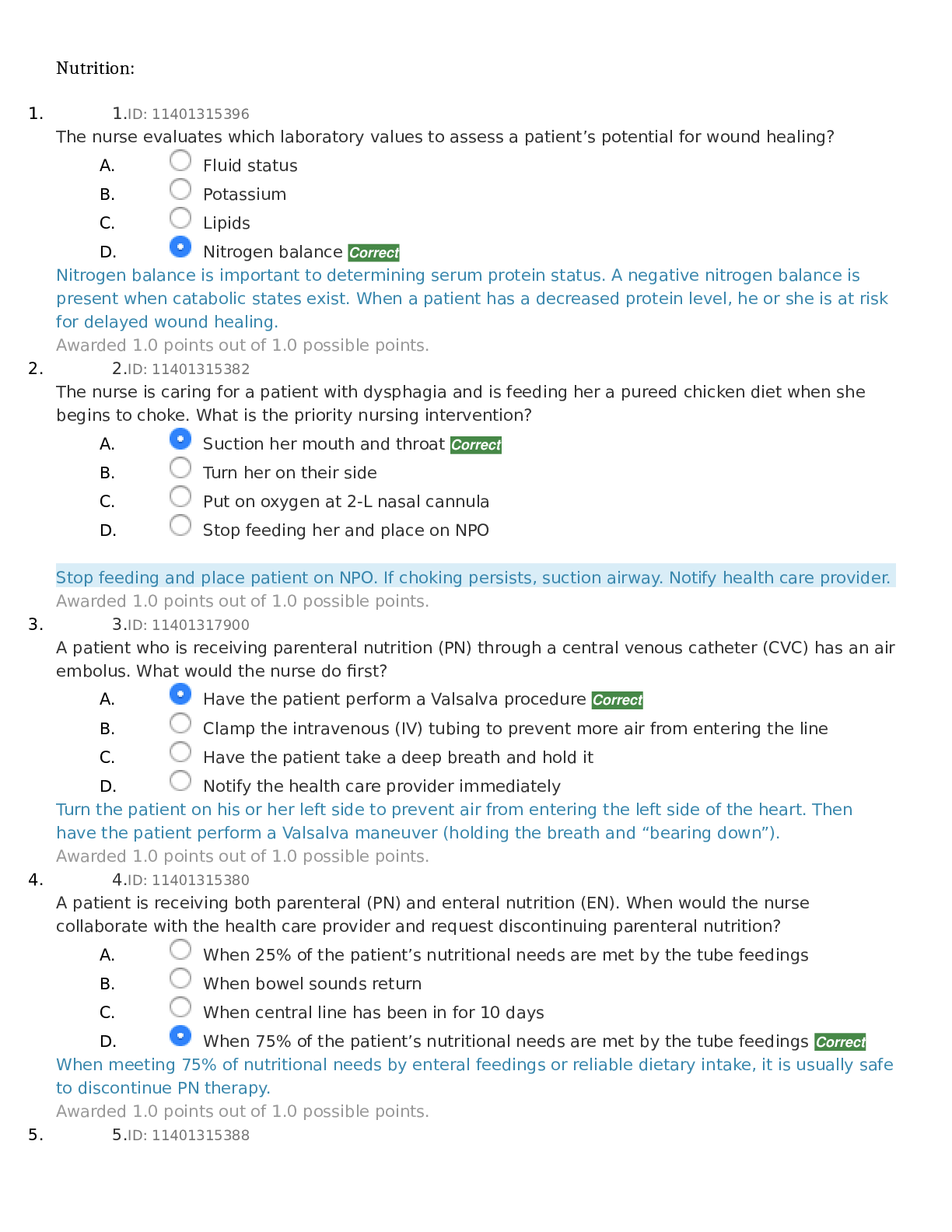

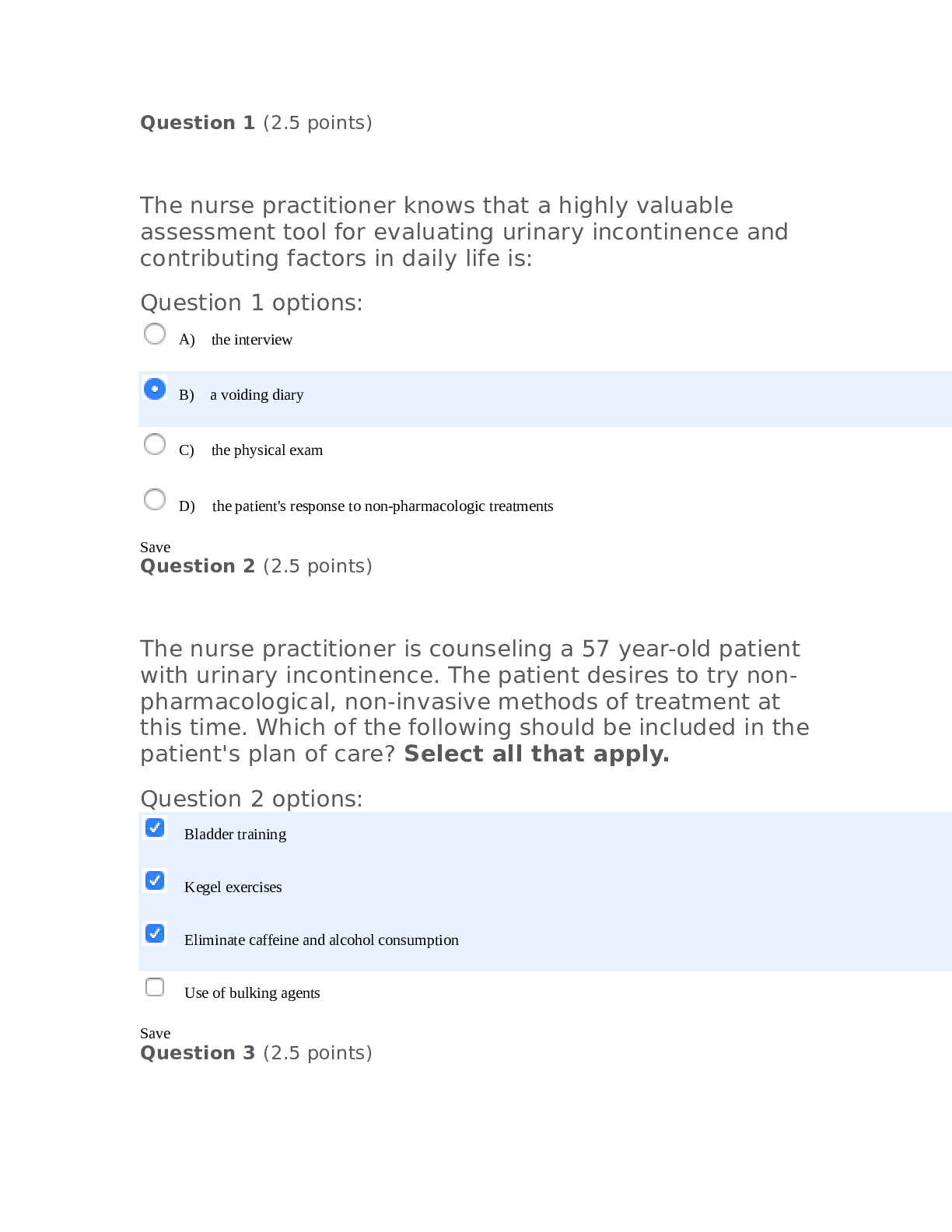

.png)
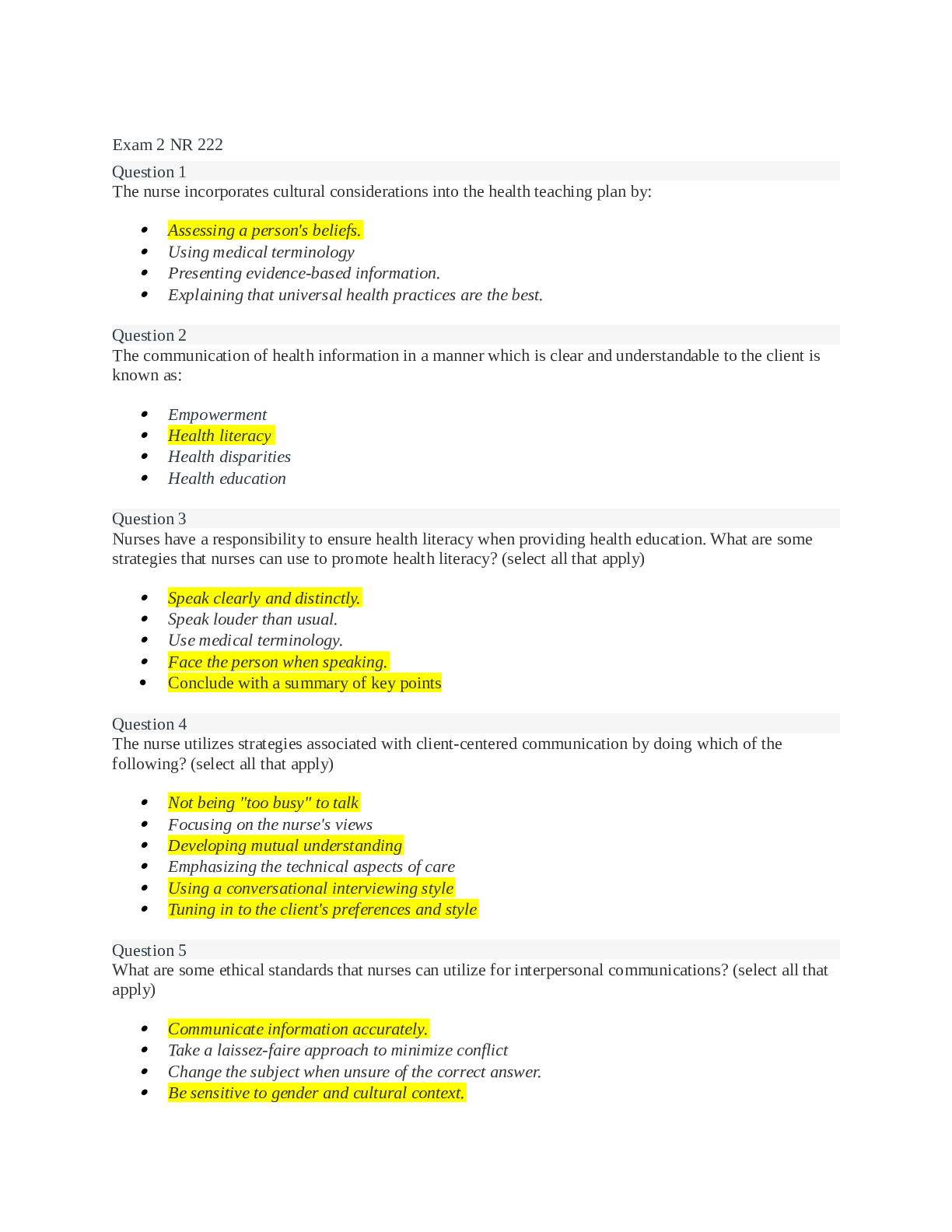
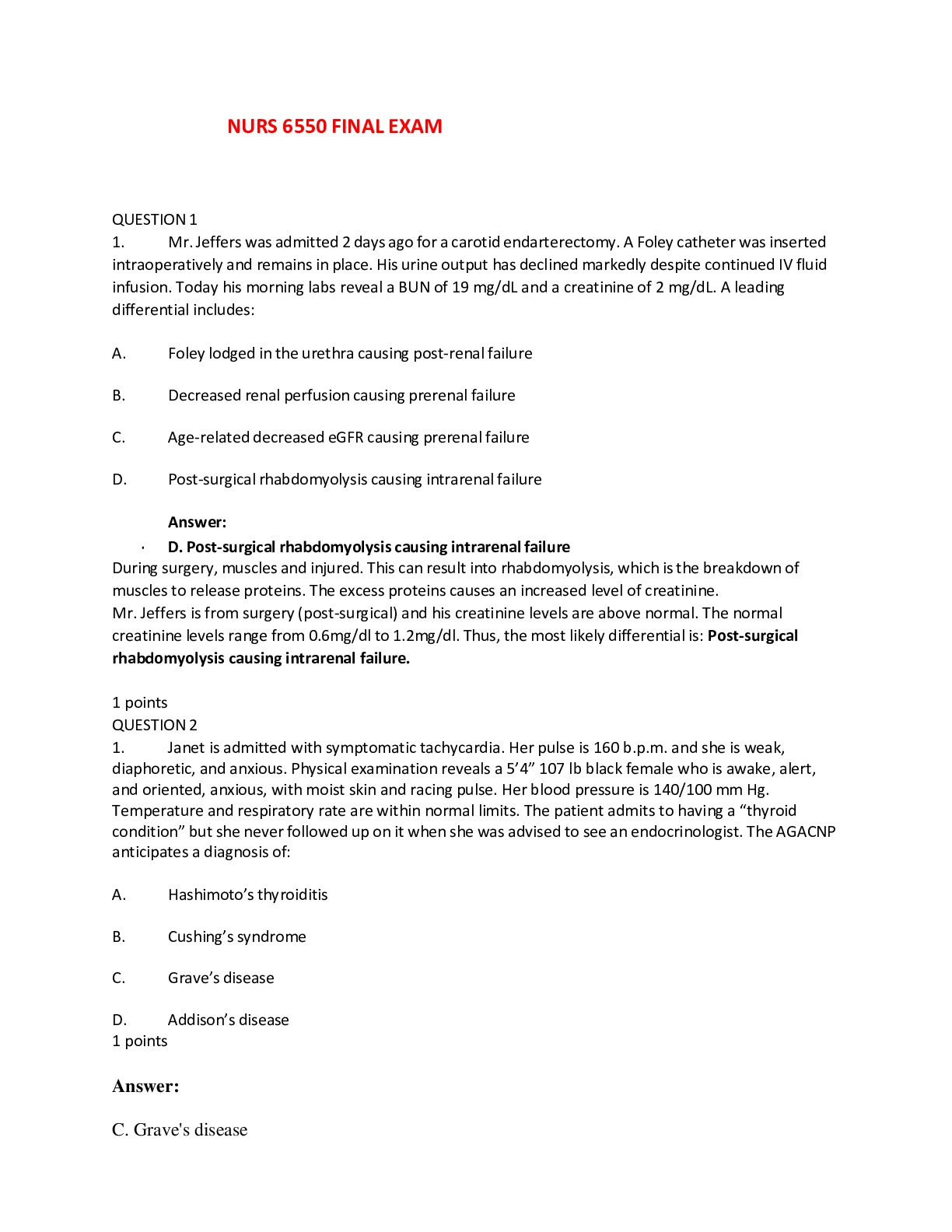
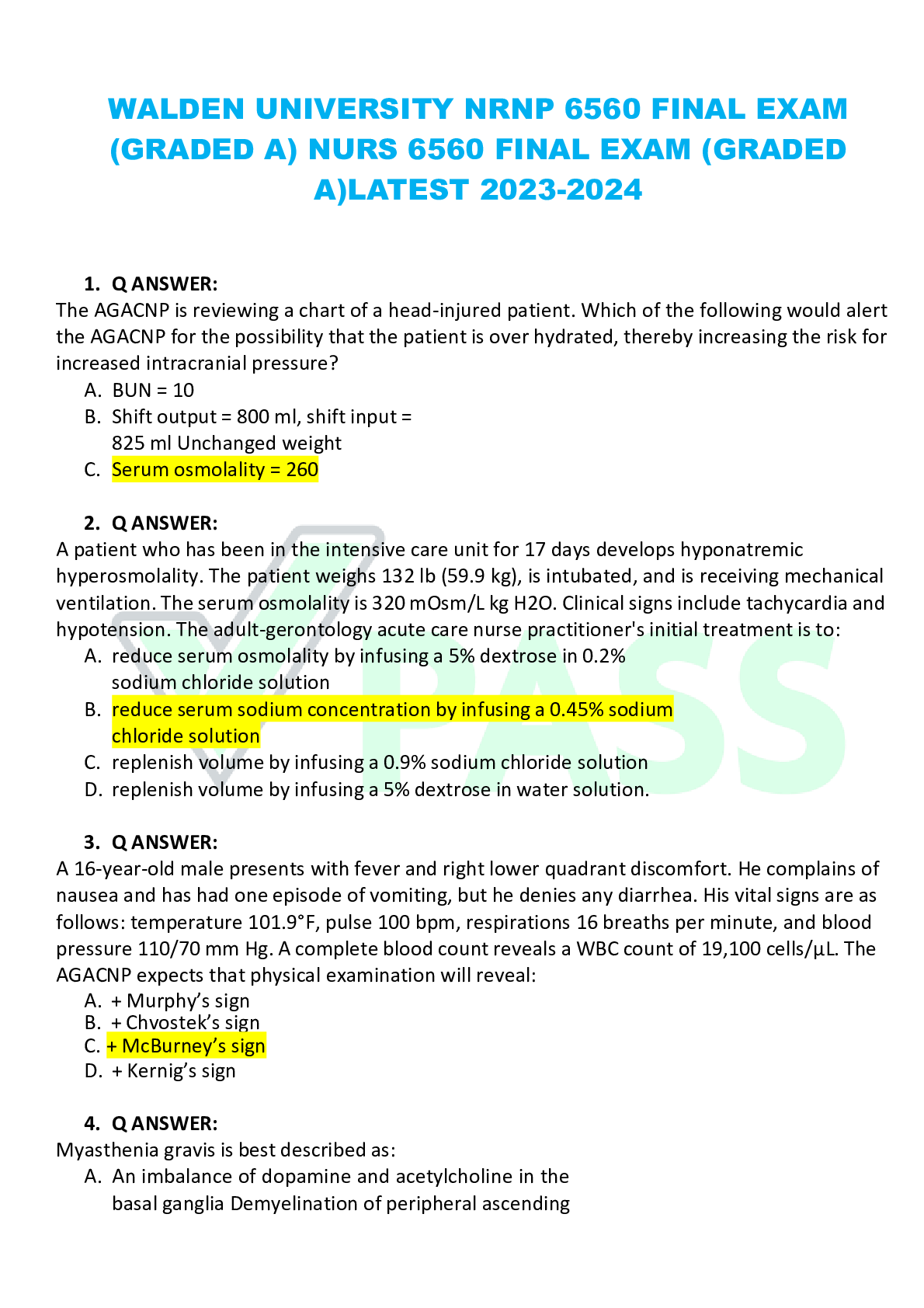
.png)


